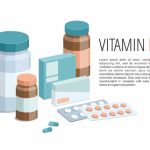Understanding the Inflammation-Skin Connection
Chronic inflammation is increasingly recognized as a key player in the development and exacerbation of many common skin disorders, including eczema, psoriasis, and acne. Inflammation is the body’s natural defense mechanism against injury or infection, but when this response becomes prolonged or dysregulated, it can have significant consequences for skin health. Scientific research reveals that inflammatory pathways trigger immune cells to release cytokines and other signaling molecules, which can disrupt the normal function of skin cells and compromise the skin barrier. For example, in eczema, heightened immune activity leads to red, itchy patches due to increased inflammation and weakened skin defenses. Psoriasis is driven by an overactive immune response causing rapid skin cell turnover and scaly plaques. Acne is also linked to inflammation as bacteria interact with clogged pores, prompting immune reactions that result in redness and swelling. Understanding these biological mechanisms highlights the importance of managing inflammation not just with topical treatments, but also through systemic approaches like diet and lifestyle modifications. By addressing inflammation at its root, individuals can take proactive steps toward healthier skin and improved overall wellness.
2. Spotlight on Common Inflammatory Skin Disorders
Inflammatory skin conditions are increasingly impacting Americans, driven by lifestyle changes, environmental factors, and shifting dietary habits. Understanding the most prevalent inflammatory skin disorders is crucial for both prevention and effective management. Below, we break down the leading conditions, their hallmark symptoms, and the latest statistics highlighting their growing incidence in the United States.
Most Prevalent Inflammatory Skin Disorders in the U.S.
| Condition | Key Symptoms | Prevalence (U.S.) |
|---|---|---|
| Eczema (Atopic Dermatitis) | Itchy, red patches; dry or scaly skin; often appears on hands, face, and joints | Affects about 31.6 million people (over 10% of the population) |
| Psoriasis | Thickened, silvery scales; inflamed plaques; commonly found on elbows, knees, scalp | More than 7.5 million adults diagnosed annually |
| Rosacea | Facial redness; visible blood vessels; bumps or pimples; eye irritation in some cases | An estimated 16 million Americans affected |
| Acne Vulgaris | Pimples, blackheads, cysts; typically affects face, back, and chest; can lead to scarring | Up to 50 million Americans each year (most common in teens and young adults) |
| Contact Dermatitis | Redness, itching, blisters after contact with irritants/allergens; localized rash pattern | Affects about 13 million people annually |
The Rising Tide: Incidence and Trends
The rates of these skin disorders are on an upward trajectory. According to the National Eczema Association, cases of atopic dermatitis have nearly doubled since the early 2000s. Psoriasis diagnoses have also climbed steadily over the last decade, reflecting not just genetic predisposition but also external triggers such as chronic stress and poor diet. Notably, rosacea is being diagnosed at younger ages due to increased awareness and changing environmental exposures.
Why Are These Conditions Increasing?
The uptick in inflammatory skin diseases mirrors broader trends in chronic inflammation across the American population. Experts attribute this rise to a combination of factors:
- Diets high in processed foods and sugar
- Increased exposure to pollutants and allergens
- Heightened stress levels and disrupted sleep patterns
- Sedentary lifestyles contributing to systemic inflammation
Takeaway for Americans Concerned About Skin Health
If you or your loved ones are experiencing persistent skin issues, it’s important to recognize that inflammation may be at the root. With these conditions becoming more common nationwide, understanding their symptoms—and the underlying inflammatory processes—can empower you to take proactive steps through dietary and lifestyle changes discussed further in this guide.

3. The Science Behind Anti-Inflammatory Diets
Over the past decade, a growing body of scientific research has highlighted the powerful connection between what we eat and how our bodies respond to inflammation, particularly as it relates to skin health. A landmark study published in JAMA Dermatology found that Americans who consumed diets rich in processed foods, sugars, and saturated fats experienced higher levels of systemic inflammation, which correlated with increased rates of common skin disorders like acne, psoriasis, and eczema.
Conversely, several large-scale studies conducted across U.S. populations have shown that adopting anti-inflammatory dietary patterns—such as the Mediterranean or DASH diets—can significantly reduce inflammatory markers in the blood. These diets emphasize whole grains, lean proteins (especially fish), colorful fruits and vegetables, nuts, seeds, and healthy oils like olive oil. Research from the National Institutes of Health (NIH) suggests these foods are high in antioxidants and omega-3 fatty acids, both of which play a key role in reducing oxidative stress and calming inflammatory pathways linked to chronic skin conditions.
Notably, a 2022 survey by the American Academy of Dermatology reported that participants who incorporated more anti-inflammatory foods into their daily meals saw measurable improvements in skin clarity, hydration, and overall appearance within 8 to 12 weeks. These findings are especially relevant for Americans facing rising rates of diet-related inflammation due to fast food consumption and sedentary lifestyles.
While genetics and environmental factors remain important contributors to skin health, current research clearly underscores the importance of dietary choices in managing inflammation. For many Americans seeking to prevent or alleviate skin issues, transitioning to an anti-inflammatory eating pattern offers a promising and accessible strategy supported by robust scientific evidence.
4. Top Anti-Inflammatory Foods and Ingredients
When it comes to fighting inflammation and supporting healthy skin, what you eat matters just as much as the creams you apply. Research consistently highlights the power of a diet rich in anti-inflammatory foods, which can help manage or even prevent common skin disorders like acne, eczema, and psoriasis. Luckily, many of these foods are accessible in American supermarkets, farmers’ markets, and even local convenience stores.
Key Nutrients for Skin Health
| Nutrient | Main Food Sources | Benefits for Skin & Inflammation |
|---|---|---|
| Omega-3 Fatty Acids | Salmon, sardines, walnuts, flaxseeds, chia seeds | Reduces inflammatory markers, soothes redness and swelling |
| Vitamin E | Almonds, sunflower seeds, avocados, spinach | Antioxidant protection against skin damage and inflammation |
| Polyphenols | Berries (blueberries, strawberries), green tea, dark chocolate (70%+ cacao) | Protects against oxidative stress and calms irritated skin |
| Vitamin C | Citrus fruits, bell peppers, broccoli, kale | Aids collagen production and helps repair damaged skin barriers |
| Zinc | Pumpkin seeds, chickpeas, beef, lentils | Supports immune response and wound healing in skin tissues |
Accessible Anti-Inflammatory Foods for Every Day
- Fatty Fish: Wild-caught salmon and sardines are loaded with omega-3s and easy to find in most grocery stores—fresh or canned.
- Berries: Blueberries, strawberries, and blackberries are antioxidant powerhouses; they’re often available year-round in both fresh and frozen forms.
- Leafy Greens: Spinach and kale pack vitamin E and other phytonutrients that help protect your skin from inflammation.
- Nuts & Seeds: Almonds, walnuts, pumpkin seeds, and flaxseeds offer healthy fats as well as zinc and vitamin E.
- Citrus Fruits: Oranges, grapefruits, lemons—rich in vitamin C for collagen support.
- Whole Grains: Oats and brown rice provide fiber that supports gut health—a key factor in reducing systemic inflammation.
- Lentils & Beans: Affordable sources of plant-based protein plus zinc.
- Green Tea: A popular beverage across the US with high levels of catechins—potent antioxidants that calm inflammatory responses.
- Tumeric & Ginger: These spices are widely available and can be easily added to soups or smoothies for their powerful anti-inflammatory effects.
Beverages That Benefit Your Skin
Sugar-sweetened drinks are known to fuel inflammation. Instead, try these options:
- Water: Hydration is crucial for maintaining a healthy skin barrier function.
- Unsweetened Green Tea: Rich in polyphenols that fight inflammation at a cellular level.
- Tart Cherry Juice: Known for its anti-inflammatory compounds—choose 100% juice with no added sugar.
- Kombucha: This fermented tea offers probiotics that may support gut-skin health connections.
The Bottom Line: Local Choices Matter
You don’t need exotic superfoods to protect your skin. By choosing locally available berries, leafy greens from nearby farms, wild-caught fish from U.S. waters, or nuts grown domestically (like almonds from California), Americans can tap into the anti-inflammatory benefits proven by science—helping their skin stay clear and resilient from within.
5. Foods and Habits to Avoid for Better Skin
Understanding which foods and lifestyle habits can trigger inflammation is essential for anyone seeking to manage skin disorders through an anti-inflammatory diet. Many typical elements of the American diet, along with certain daily behaviors, have been shown to exacerbate inflammatory responses in the body, potentially worsening conditions like acne, eczema, and psoriasis.
Highly Processed Foods and Refined Sugars
One of the biggest culprits in fueling inflammation is the prevalence of highly processed foods and refined sugars. Fast food, packaged snacks, sugary cereals, and desserts are common in the U.S., but these items often contain trans fats, high-fructose corn syrup, and artificial additives that can trigger inflammatory pathways. Swapping out soda and candy for sparkling water with fresh fruit or unsweetened Greek yogurt with berries can help reduce sugar intake and support healthier skin.
Excessive Dairy and Red Meat Consumption
Dairy products—especially those high in fat—and red meats are staples in many American diets. While not everyone reacts the same way, studies suggest that a high intake of full-fat dairy (like whole milk, cheese, and ice cream) as well as processed meats (such as bacon, sausage, and hot dogs) can increase inflammation and may worsen symptoms for some people with skin disorders. Consider opting for plant-based milks or lean protein sources like chicken, fish, or legumes instead.
Unhealthy Fats: Trans Fats and Omega-6 Oils
Trans fats are commonly found in margarine, fried foods, and many packaged baked goods. Similarly, excessive consumption of omega-6 fatty acids—present in vegetable oils such as corn oil and soybean oil—can disrupt the balance with anti-inflammatory omega-3s (found in fish and flaxseed). Reading ingredient labels and cooking more meals at home using olive oil or avocado oil can make a significant difference.
Poor Hydration Habits
Dehydration is often overlooked but plays a key role in maintaining healthy skin. Americans frequently consume caffeinated drinks like coffee or energy drinks instead of water throughout the day. To support skin health, aim to drink plenty of water or herbal teas; try infusing water with lemon or cucumber for added flavor without added sugars.
Lifestyle Factors: Stress and Sleep Deprivation
The American lifestyle often involves high stress levels and irregular sleep patterns due to work demands or screen time. Chronic stress raises cortisol levels, increasing inflammation systemically and worsening skin issues. Prioritizing regular sleep schedules, practicing mindfulness techniques like meditation, and reducing screen time before bed are practical steps toward lowering inflammation.
Practical Swaps for Everyday Living
If you’re looking to improve your skin by reducing inflammation, start by swapping white bread for whole-grain alternatives, choose grilled over fried foods, replace sweetened beverages with naturally flavored seltzer, and incorporate more fruits, vegetables, nuts, and seeds into your meals. Small changes in both diet and daily habits can add up to big improvements in your skin health over time.
6. Building an Anti-Inflammatory Meal Plan
Creating an anti-inflammatory meal plan doesn’t have to mean giving up the foods you love—instead, it’s about making mindful swaps and building a plate that supports your skin health. For American readers, this approach is all about balancing convenience, flavor, and nutrition. Here’s how you can get started:
Start with Whole Foods
Focus on incorporating more whole, minimally processed foods into your meals. Think fresh fruits and vegetables, whole grains like quinoa and brown rice, lean proteins such as salmon or grilled chicken, and healthy fats from sources like avocados and nuts. These ingredients are loaded with antioxidants and phytonutrients known to combat inflammation.
Sample Meal Ideas
Breakfast
A bowl of steel-cut oats topped with blueberries, walnuts, and a drizzle of honey offers fiber and omega-3s to start your day right. Or try a smoothie with spinach, banana, almond butter, and flaxseed for a quick nutrient boost.
Lunch
Enjoy a grilled salmon salad with mixed greens, cherry tomatoes, cucumbers, olive oil, and lemon dressing. Alternatively, opt for a quinoa bowl with roasted sweet potatoes, black beans, avocado, salsa, and a squeeze of lime.
Dinner
Bake chicken breast with turmeric and garlic alongside steamed broccoli and brown rice pilaf. Another easy option: stir-fried tofu with bok choy, bell peppers, ginger, and tamari sauce over wild rice.
Snack Options
- Sliced apples with almond butter
- Carrot sticks and hummus
- Greek yogurt topped with chia seeds and strawberries
- A handful of mixed nuts or pumpkin seeds
Tips for Success
- Plan ahead: Meal prep on Sundays so you always have anti-inflammatory options ready to go.
- Read labels: Choose foods low in added sugars and saturated fats.
- Spice it up: Use anti-inflammatory spices like turmeric, ginger, cinnamon, and garlic to add flavor without extra calories.
- Hydrate smartly: Drink water or herbal teas instead of sugar-sweetened beverages.
Cultural Connections
Many traditional American dishes can be made anti-inflammatory by swapping out refined carbs for whole grains or choosing grilled over fried proteins. For example, enjoy turkey burgers on whole wheat buns with leafy greens or try homemade chili loaded with beans and veggies. The key is flexibility—adapting familiar favorites in small ways that add up to big benefits for your skin health.
7. Integrating Diet with Dermatological Care
Successfully managing inflammatory skin disorders like eczema, psoriasis, and acne requires more than just topical treatments or prescriptions—it calls for a comprehensive, holistic approach that addresses both internal and external factors. While adopting an anti-inflammatory diet can play a significant role in reducing flare-ups and supporting skin health, it’s essential to integrate these dietary changes with professional dermatological care for best results.
Collaborating with Healthcare Professionals
Before making major adjustments to your diet, consult with a board-certified dermatologist and, if possible, a registered dietitian. These professionals can help you identify potential food triggers, create a tailored nutrition plan, and monitor your skin’s response over time. In the U.S., many dermatology clinics now offer integrative care models that combine nutrition counseling with medical therapies—an approach that aligns with current trends in personalized medicine.
The Role of Medical Treatments
While anti-inflammatory foods can support skin healing and reduce systemic inflammation, they are not a substitute for evidence-based medical treatments such as topical corticosteroids, immunomodulators, or biologics when indicated. Dietary changes should be viewed as complementary to these therapies, enhancing their effectiveness and potentially minimizing the need for higher medication doses.
Building a Sustainable Routine
For American patients seeking long-term relief from inflammatory skin disorders, consistency is key. Incorporate anti-inflammatory foods into your daily routine while also adhering to prescribed skincare regimens. Track your progress using digital tools or journals popular among U.S. consumers—such as wellness apps—to stay motivated and engaged in your holistic care plan.
The Power of a Holistic Approach
Ultimately, combining nutrition science with dermatological expertise offers the greatest potential for managing chronic skin inflammation. By taking ownership of both what you eat and how you care for your skin—with guidance from trusted healthcare providers—you set the stage for healthier skin and improved overall well-being. This integrated strategy reflects the growing movement in the U.S. toward proactive, lifestyle-driven health management—one that empowers individuals to take control of their condition from the inside out.

